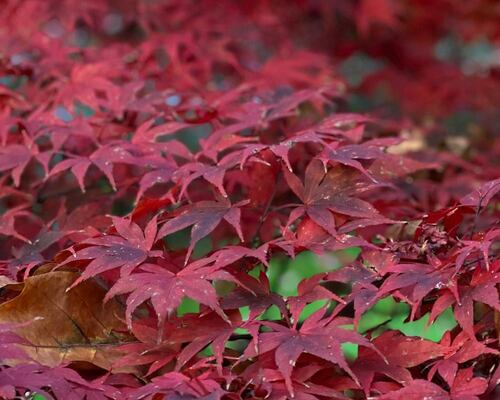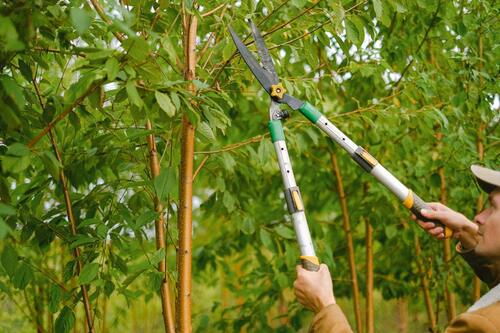Understanding and Caring for Trees in Autumn

Introduction
As the vibrant colors of fall emerge, our landscapes transform into a canvas of red, orange, yellow, and brown hues. While this seasonal change is a feast for the eyes, it also signals the beginning of a crucial period for tree care. Understanding why leaves change color and how to care for trees during this time is essential for maintaining their health. In this guide, we'll explore the science behind this transformation and provide detailed tips on how to care for your trees in autumn.
Why Do Leaves Change Color?

Iconic Autumn-Hued Maple Leaves - Photo by Yelena Odintsova
As autumn approaches, the shorter days and cooler temperatures set off a transformation in deciduous trees. This change is not just a visual spectacle but a complex biological process that prepares trees for the coming winter. Understanding why leaves change color requires a closer look at the chemistry within the leaves and the environmental cues that trigger this transformation.
Chlorophyll Breakdown: The Hidden Colors Revealed
During the growing season, leaves are green due to the presence of chlorophyll, the pigment responsible for photosynthesis. Chlorophyll allows trees to capture sunlight and convert it into energy. However, as the days shorten and temperatures drop in autumn, trees begin to break down chlorophyll. This breakdown is a survival strategy, as the tree reabsorbs valuable nutrients from the leaves before they fall.
As chlorophyll fades, the green color diminishes, revealing pigments that were previously masked. These pigments include:
- Carotenoids: Responsible for the yellow and orange hues seen in species like birch, aspen, and maple. Carotenoids are present in leaves throughout the growing season, but only become visible when chlorophyll is depleted.
- Anthocyanins: These pigments produce the reds and purples in leaves, especially in species like red maples and oaks. Unlike carotenoids, anthocyanins are produced in the autumn in response to the breakdown of sugars in the leaves. The production of anthocyanins is influenced by light exposure and temperature, leading to the vivid reds that are characteristic of fall.
The Role of Weather in Leaf Color Intensity
Weather conditions play a significant role in the intensity and duration of fall colors. Ideal conditions for vibrant autumn foliage include sunny days and cool—but not freezing—nights. During the day, warm sunlight increases sugar production in the leaves, which enhances anthocyanin production. Cooler nights slow down the transport of these sugars from the leaves to the branches, resulting in more vivid reds and purples.
Conversely, a warm, wet fall can lead to a muted display of colors, as the cool nights needed for anthocyanin production are absent. Early frosts can also dull the colors by damaging the leaves before they fully develop their fall pigments.
The Ecological Significance of Leaf Color Change
Beyond its beauty, the color change in leaves has ecological significance. The breakdown of chlorophyll and the subsequent recycling of nutrients help trees conserve resources for the winter. The production of anthocyanins, in particular, has been suggested to protect leaves from damage by light, acting as a sort of sunscreen, or to deter herbivores from feeding on the leaves.
Additionally, the timing of leaf drop is crucial for the tree's survival. By shedding leaves, trees reduce water loss during the dry winter months and minimize the risk of damage from the weight of snow and ice. The fallen leaves also contribute to the ecosystem by decomposing and enriching the soil with organic matter, supporting the growth of future vegetation.
A Glimpse into Nature’s Adaptation
The changing colors of autumn leaves are more than just a seasonal phenomenon—they are a testament to the intricate adaptations of trees to their environments. Every shade of red, yellow, and orange represents a different strategy for survival, ensuring that the tree can endure the harsh conditions of winter and emerge strong and healthy in the spring.
How to Care for Your Trees in Autumn

A Worker Carefully Prunes a Small Tree Branch - Photo by Anna Shvets
Adjusting Watering Practices
During early autumn, it's essential to adjust your tree-watering schedule. Gradually reduce watering for both evergreen and deciduous trees to allow them to transition smoothly into dormancy. Excessive watering during this time can encourage new growth that won't be hardy enough to survive the winter. However, as the leaves begin to fall, it's crucial to provide one final deep watering before the ground freezes. This helps ensure that the roots are well hydrated and ready for the cold months ahead.
Leaf Management and Soil Care
Once the leaves have fallen, promptly rake them into piles and remove them from around your trees. Accumulated leaves can create a barrier that prevents water from penetrating the soil and inhibits proper air circulation, which is vital for root health. After clearing the leaves, apply a layer of organic compost mulch around the bases of your trees. This mulch helps moderate soil temperature, retain moisture, and protect the roots from extreme cold.
Protecting Trees from Winter Damage
To safeguard your trees from winter damage, consider installing protective barriers around their trunks. Metal hardware cloth or plastic guards can prevent breakage due to ice and snow accumulation. Additionally, wrapping the tree trunks with burlap or plastic wrap can help maintain a stable temperature around the trees, reducing the risk of frost damage. However, be sure to remove these coverings in the spring to allow for natural growth and prevent any restriction.
Pruning for Health and Structure
Autumn is an ideal time to prune your trees. With the leaves gone, the tree's structure is more visible, making it easier to identify and remove any dead or diseased branches. Pruning during this time also prepares the tree for the dormant season, allowing it to conserve energy and direct resources toward healthy growth in the spring. Remember, proper pruning enhances the tree's overall health and resilience.
Preparing Your Trees for a Healthy Winter

Light Snow Lines a Tree Branch - Image by lppicture on Pixabay
As the vibrant colors of autumn fade and the chill of winter approaches, it's essential to understand the unique needs of your trees during this transitional period. By appreciating the science behind leaf color changes and taking proactive steps to prepare your trees for winter, you can ensure their health and vitality for seasons to come.
Fall is a time of preparation, not just for your trees but for the entire ecosystem they support. The actions you take now—whether it's deep watering, mulching, pruning, or protecting against pests and harsh weather—will pay off when your trees emerge from their winter dormancy, ready to burst into life in the spring.
Remember, healthy trees contribute to a healthy environment. They provide shade, clean air, and a beautiful landscape that enhances the quality of life for everyone. By investing time and care into your trees during the fall and winter, you're not only safeguarding their future but also enriching your surroundings.
If you find yourself needing expert advice or assistance with your tree care needs, don’t hesitate to reach out to Arborist Now. Our team is here to help you ensure that your trees remain strong, healthy, and beautiful all year round. With the right care and attention, your trees will continue to thrive, adding beauty and value to your property for many years to come.
Originally posted on August 31, 2018.





